- Schefflera: Care at Home, Types and Varieties Your Ultimate Guide
- Introduction
- Types and Varieties
- Care Tips
- Potting and Soil
- Pests and Diseases
- Conclusion
- Understanding Schefflera
- Types and Varieties
- Care Requirements
- Care Tips for Schefflera
- 1. Light
- 2. Water
- 3. Temperature
- 4. Humidity
- 5. Fertilizer
- 6. Pruning
- 7. Pests
- 8. Repotting
- 9. Propagation
- 10. Toxicity
- Choosing the Right Schefflera Variety
- 1. Schefflera arboricola
- 2. Schefflera actinophylla
- 3. Schefflera elegantissima
- 4. Schefflera alba
- Common Problems and Solutions for Schefflera
- 1. Overwatering
- 2. Underwatering
- 3. Low Humidity
- 4. Insufficient Light
- 5. Pests
- 6. Pot-Bound Roots
- Propagation of Schefflera Plants
- 1. Stem Cuttings
- 2. Air Layering
- Decorating with Schefflera
- Introduction
- 1. Placement and Size
- 2. Containers and Planters
- 3. Complementary Plants
- 4. Hanging Baskets
- 5. Natural Dividers
- 6. Centerpieces and Focal Points
- Conclusion
- Q&A:
- How do I take care of Schefflera at home?
- What are the different types of Schefflera?
- How often should I water my Schefflera plant?
- Can I keep my Schefflera plant outside?
- How do I propagate Schefflera?
- What should I do if my Schefflera leaves are turning yellow?
- Can I prune my Schefflera plant?
- Video: Schefflera: Successful Notching & hard pruning | Branching started after notching & sprouting
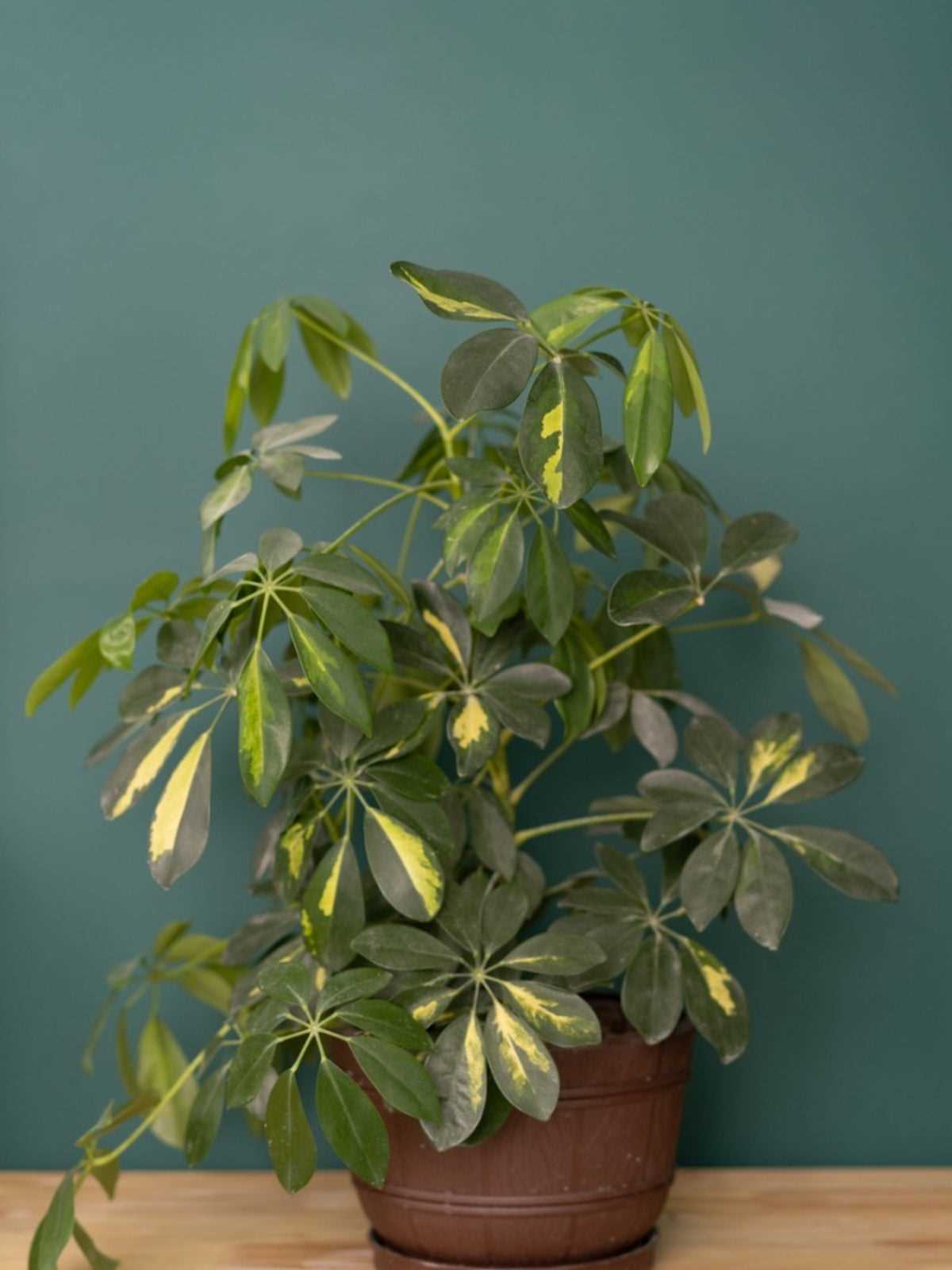
Welcome to your ultimate guide to schefflera care at home! Schefflera, also known as umbrella tree or octopus tree, is a popular houseplant that can add a touch of vibrant green to any room. With its lush foliage and unique leaf shape, schefflera is a favorite among plant enthusiasts.
In this guide, we’ll cover everything you need to know about caring for schefflera at home. From watering and sunlight requirements to common problems and pests, we’ve got you covered. Whether you’re a beginner or an experienced plant parent, you’ll find valuable tips and advice to help your schefflera thrive.
Schefflera comes in various types and varieties, each with its own unique characteristics. From the classic schefflera arboricola with its compact size and glossy leaves, to the larger schefflera actinophylla with its bold, palm-like foliage, there’s a schefflera for every taste and space. We’ll discuss the different types and varieties in detail, so you can find the perfect schefflera for your home.
So whether you’re looking to add a touch of green to your living room, or want to expand your indoor plant collection, schefflera is a fantastic choice. With proper care and the right knowledge, you can enjoy the beauty of this gorgeous houseplant for years to come. Let’s dive in and learn all about schefflera care!
Schefflera: Care at Home, Types and Varieties Your Ultimate Guide
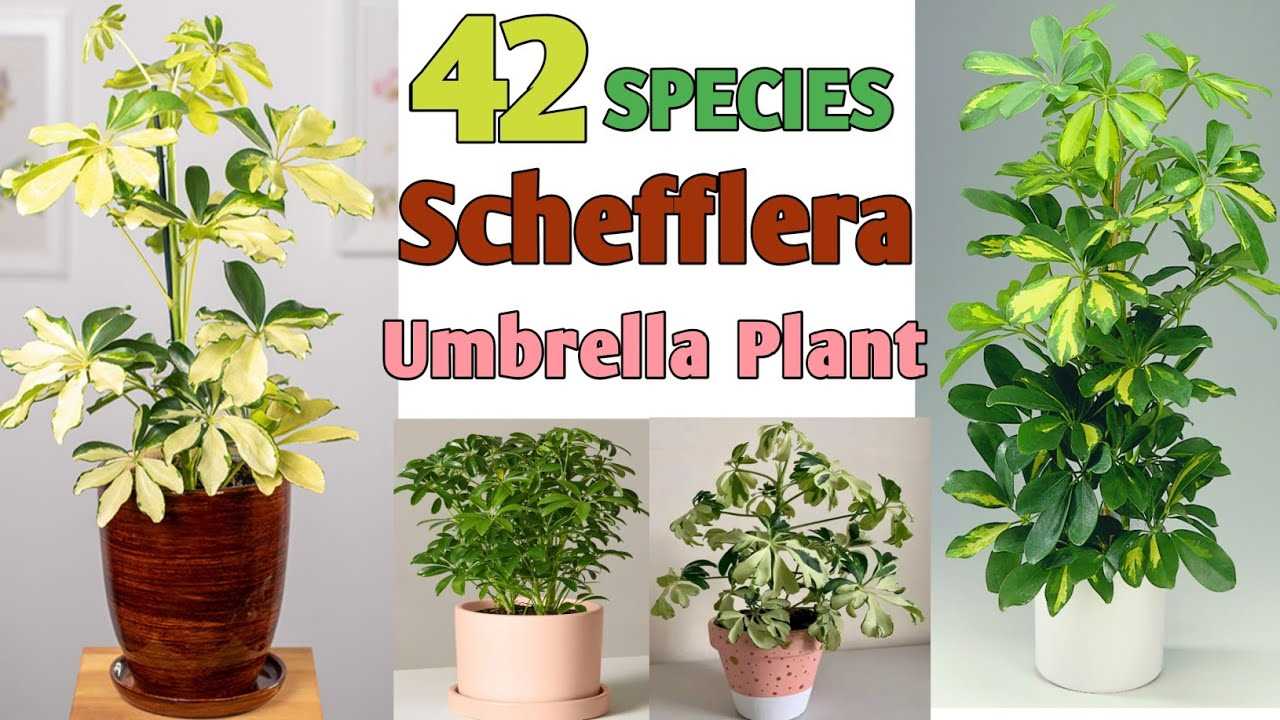

Introduction
Schefflera, also known as umbrella tree or octopus tree, is a popular houseplant known for its lush foliage and ability to thrive indoors. It is native to tropical regions and belongs to the Araliaceae family.
Types and Varieties
There are several types and varieties of schefflera available, each with its own unique characteristics:
- Schefflera Actinophylla: Also known as Australian umbrella tree, this variety has glossy, palmate leaves and can grow up to 30 meters tall in its native habitat.
- Schefflera Arboricola: Commonly known as dwarf schefflera or umbrella plant, this variety is popular as a houseplant. It has smaller leaves and a bushier growth habit.
- Schefflera Elegantissima: This variety has variegated leaves with cream or yellow markings, adding an extra touch of beauty to your indoor space.
Care Tips
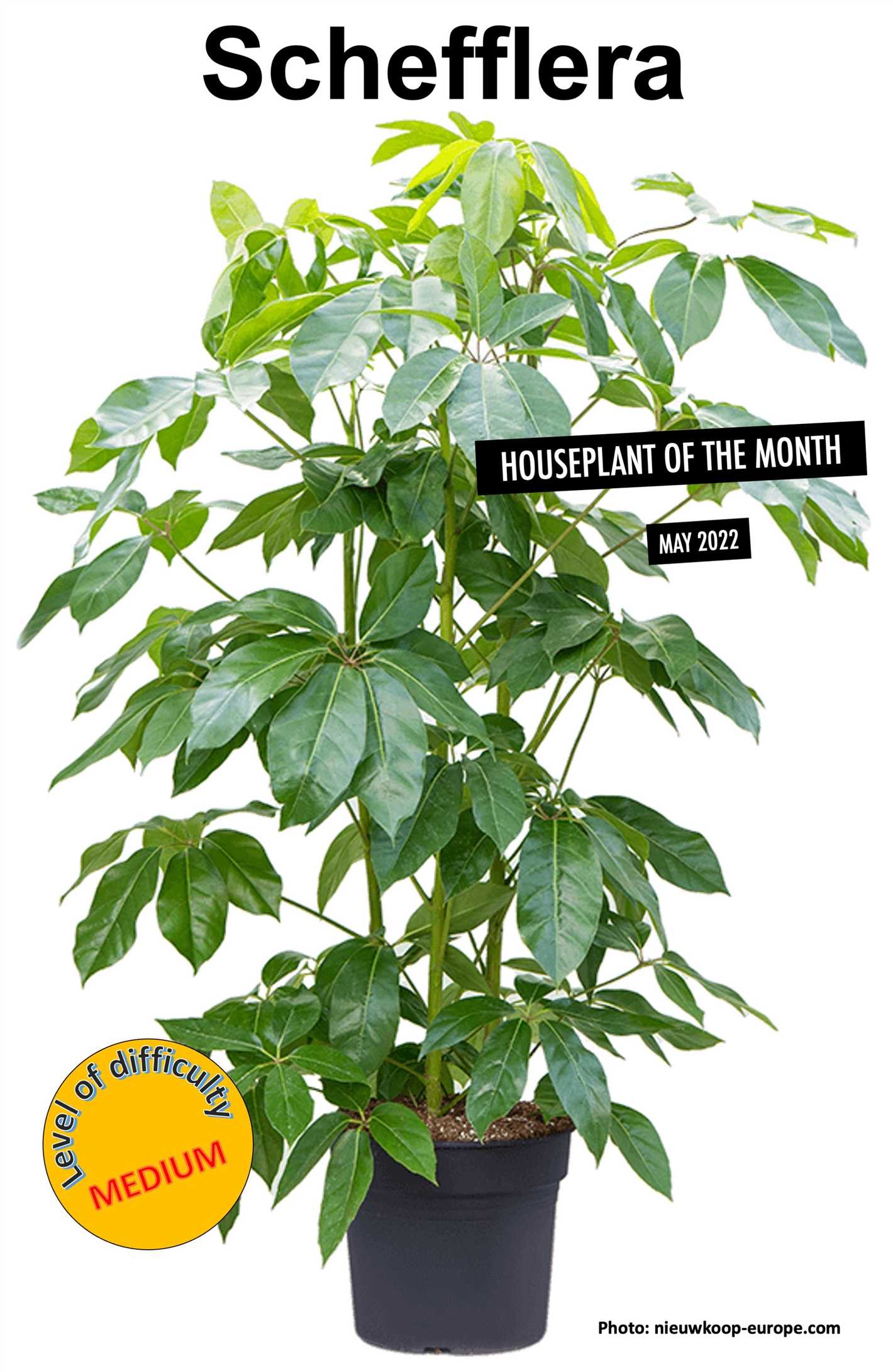

Providing the right care is essential for the health and growth of schefflera. Here are some care tips to keep in mind:
- Light: Schefflera thrives in bright, indirect light. Avoid placing it in direct sunlight, as it can scorch the leaves.
- Water: Water schefflera thoroughly when the top inch of soil feels dry. Avoid overwatering, as it can lead to root rot. Allow the excess water to drain out of the pot.
- Temperature: Schefflera prefers average room temperatures between 60-75°F (15-24°C). It should be kept away from drafts and extreme temperature changes.
- Humidity: Schefflera appreciates higher humidity levels. You can increase humidity by placing the pot on a tray filled with water and pebbles or using a humidifier.
- Fertilizer: Feed schefflera with a balanced liquid fertilizer every 2-4 weeks during the growing season (spring and summer). Follow the instructions on the fertilizer packaging for dosage.
- Pruning: Schefflera can be pruned to maintain its shape and remove any dead or damaged leaves. Pruning should be done in spring or early summer.
Potting and Soil
When potting schefflera, choose a well-draining potting mix that retains moisture without becoming waterlogged. A mix of potting soil, peat moss, and perlite or vermiculite works well. Repot the plant when it becomes root-bound, typically every 1-2 years.
Pests and Diseases
Schefflera can be susceptible to common houseplant pests such as spider mites, mealybugs, and scale insects. Regularly inspect the plant and treat any infestations promptly. Overwatering or poor drainage can lead to root rot, so it’s important to avoid these conditions.
Conclusion
Schefflera is a beautiful and easy-to-care-for houseplant that can bring a touch of tropical charm to any indoor space. By following the care tips mentioned in this guide, you can ensure the health and vitality of your schefflera plant.
Understanding Schefflera
Schefflera is a popular houseplant known for its beautiful foliage and easy care requirements. Also known as the umbrella tree, Schefflera is native to tropical and subtropical regions of Australia, New Guinea, and the Pacific Islands.
Schefflera plants are characterized by their large, glossy leaves that resemble umbrella spokes. The leaves are typically arranged in clusters at the end of long stems, giving the plant a full and bushy appearance. The plant can grow up to 10 feet tall with the right care and conditions.
Types and Varieties
There are several types and varieties of Schefflera that you can choose from, each with its own unique characteristics:
- Schefflera arboricola: Also known as dwarf schefflera, this variety is smaller in size and has smaller leaves compared to other types. It is a popular choice for indoor gardening due to its compact growth habit.
- Schefflera actinophylla: Commonly known as the Queensland umbrella tree, this variety has larger leaves and can grow taller than other types. It is often used as a decorative plant in gardens and landscapes.
- Schefflera elegantissima: This variety has variegated leaves with cream or yellow edges, adding a splash of color to any indoor space.
Care Requirements
Schefflera plants are generally easy to care for, making them a great choice for both beginner and experienced gardeners. Here are some care tips to keep your Schefflera healthy and thriving:
- Light: Schefflera plants prefer bright, indirect light. They can tolerate some shade but may not grow as vigorously in lower light conditions.
- Watering: Water your Schefflera when the top inch of soil feels dry. Be careful not to overwater, as this can lead to root rot.
- Temperature and Humidity: Schefflera plants prefer temperatures between 60-75°F (15-24°C) and humidity levels around 50-60%. They can tolerate slightly lower temperatures during the winter months.
- Pruning: Prune your Schefflera to control its size and shape. Remove any dead or yellowing leaves regularly to promote healthy growth.
- Fertilizing: Feed your Schefflera with a balanced, water-soluble fertilizer every 2-4 weeks during the growing season (spring and summer). Reduce fertilization during the winter months.
By providing the right conditions and care, your Schefflera plant will reward you with its lush foliage and vibrant presence in your home or garden.
Care Tips for Schefflera
1. Light
Schefflera plants thrive in bright, indirect light. Place your schefflera near a window where it can receive plenty of natural light, but avoid direct sunlight as it can scorch the leaves.
2. Water
Water your schefflera moderately, allowing the top inch of soil to dry out before watering again. Overwatering can lead to root rot, while underwatering can cause the leaves to wilt. Always check the moisture level of the soil before watering.
3. Temperature
Schefflera plants prefer temperatures between 60-75°F (15-24°C). They are sensitive to cold drafts, so keep them away from doors or windows during the winter months. Avoid placing them near heating vents or radiators as well, as this can dry out the leaves.
4. Humidity
Schefflera plants enjoy moderate humidity levels. If the air in your home is dry, you can increase humidity by placing the plant on a tray filled with water and pebbles. Misting the leaves regularly can also help maintain humidity.
5. Fertilizer
Feed your schefflera plant with a balanced water-soluble fertilizer every 2-3 months during the growing season (spring and summer). Follow the dosage instructions on the fertilizer packaging and avoid overfertilization.
6. Pruning
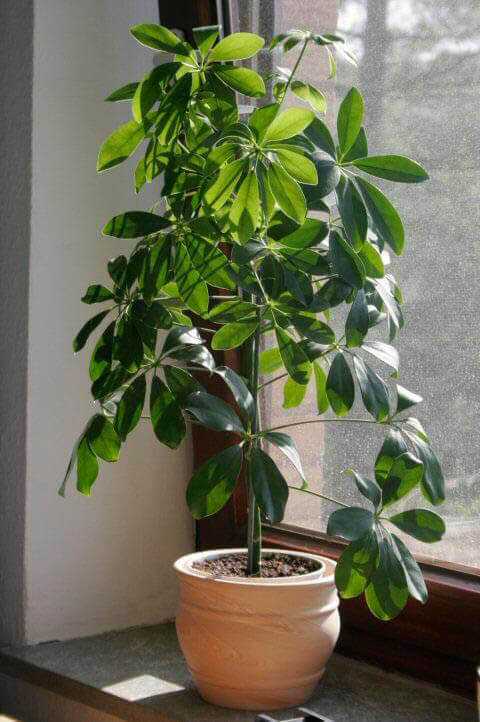

Prune your schefflera regularly to maintain its shape and prevent it from becoming too leggy. Remove any dead or yellow leaves, as well as any overcrowded branches. You can also prune back long branches to encourage bushier growth.
7. Pests
Check your schefflera regularly for signs of pests such as aphids, mealybugs, or spider mites. If you notice any infestation, isolate the plant and treat it with an appropriate insecticide or insecticidal soap. Regularly wiping the leaves with a damp cloth can also help prevent pest problems.
8. Repotting
Repot your schefflera every 1-2 years or when the roots start to outgrow the current pot. Use a well-draining potting mix and choose a pot that is slightly larger than the previous one. Repotting in spring is ideal.
9. Propagation
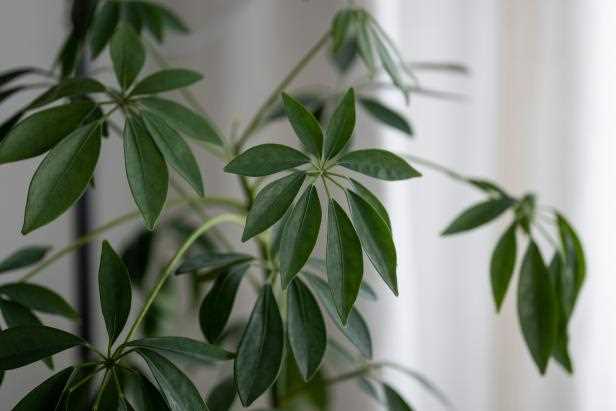

Schefflera plants can be propagated through stem cuttings or air layering. To propagate through stem cuttings, take a 4-6 inch cutting from a healthy stem and place it in a pot with moist soil. Keep the soil consistently moist and provide bright, indirect light. Roots should develop within a few weeks.
10. Toxicity
Keep schefflera plants out of reach of children and pets, as they are mildly toxic if ingested. Contact with the sap can also cause skin irritation, so it’s best to wear gloves when handling the plant.
Choosing the Right Schefflera Variety
When it comes to choosing the right schefflera variety for your home or garden, there are several factors to consider. Each variety has its own unique characteristics and requirements, so it’s important to choose one that suits your needs and preferences. Here are some popular schefflera varieties to consider:
1. Schefflera arboricola
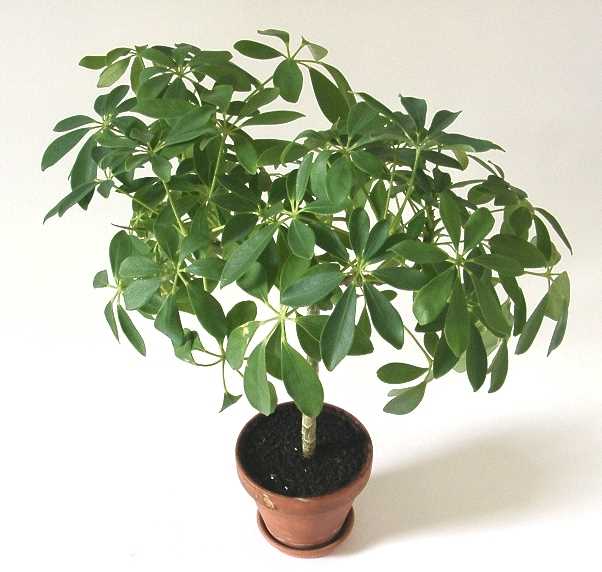

Also known as the dwarf umbrella tree, schefflera arboricola is a popular indoor plant that is known for its compact size and attractive foliage. It features small, glossy green leaves that grow in clusters, giving it a lush and bushy appearance. This variety is perfect for small spaces and can be grown in containers or hanging baskets. It thrives in bright, indirect light and prefers well-draining soil.
2. Schefflera actinophylla
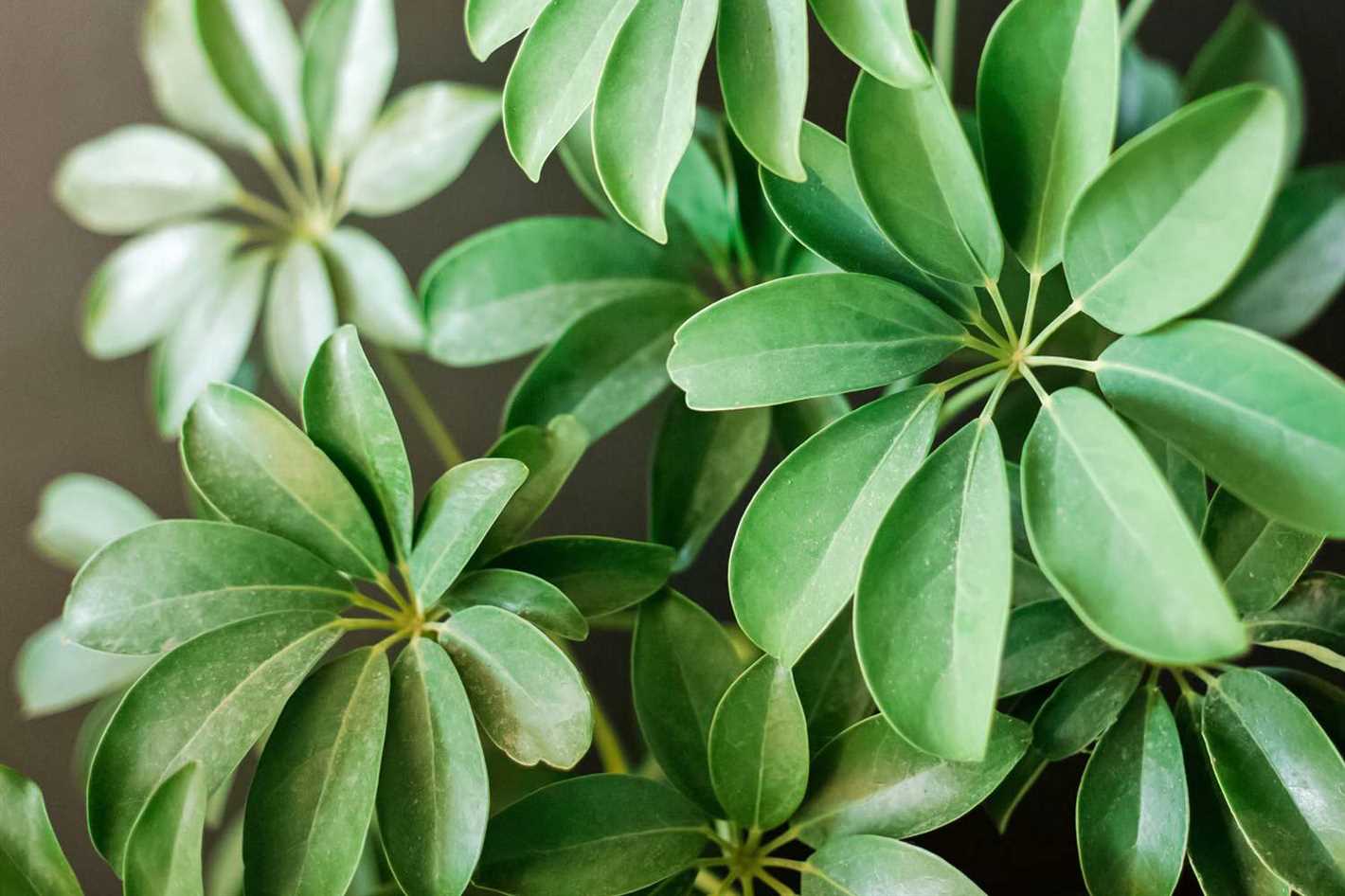

Commonly referred to as the Queensland umbrella tree, schefflera actinophylla is a tropical plant that can be grown both indoors and outdoors. It features large, glossy leaves that are divided into several leaflets, giving it a distinctive look. This variety can grow quite tall, making it a great choice for adding vertical interest to your garden. It thrives in bright, indirect light and prefers moist soil.
3. Schefflera elegantissima
The schefflera elegantissima, also known as the false aralia, is a stunning variety that features uniquely shaped leaves with intricate patterns. Its foliage showcases a mix of green and cream colors, adding a touch of elegance to any setting. This variety can be grown indoors as a houseplant or outdoors in warm climates. It thrives in bright, indirect light and prefers well-draining soil.
4. Schefflera alba


The schefflera alba, also known as the alpine schefflera, is a rare variety that is prized for its white or cream-colored leaves. It features slender, lance-shaped foliage that creates a striking contrast against its dark stems. This variety can be grown indoors as a houseplant or outdoors in subtropical climates. It thrives in bright, indirect light and prefers well-draining soil.
When choosing a schefflera variety, consider the available space, lighting conditions, and your personal preferences. It’s also important to research the specific care requirements of each variety to ensure its successful growth in your home or garden.
Common Problems and Solutions for Schefflera
1. Overwatering
Overwatering is a common problem for Schefflera plants. Too much water can lead to root rot and cause the leaves to wilt or turn yellow. To solve this problem, make sure to allow the top inch of soil to dry out before watering again. Adjust your watering schedule according to the specific needs of your plant and the conditions in your home.
2. Underwatering
Underwatering can also be detrimental to Schefflera plants. When the soil is too dry, the leaves may become crispy and start to droop. To address this issue, check the moisture level of the soil regularly. Water the plant thoroughly when the top inch of soil feels dry to the touch. You can also mist the leaves with water to increase humidity around the plant.
3. Low Humidity
Schefflera plants thrive in environments with high humidity. If the air in your home is too dry, the leaves may develop brown, crispy edges. To increase humidity, you can place a tray of water near the plant or use a humidifier. Grouping plants together can also create a microclimate with higher humidity.
4. Insufficient Light
Schefflera plants need bright, indirect light to grow well. If your plant is not receiving enough light, it may become leggy and have sparse foliage. Place your Schefflera near a window with filtered sunlight or use artificial grow lights. Rotate the plant regularly to ensure even growth on all sides.
5. Pests
Schefflera plants are susceptible to pests such as spider mites, aphids, and mealybugs. Look out for signs of infestation, such as yellowing leaves, white webbing, or small insects on the plant. To get rid of pests, you can wipe the leaves with a mild soap and water solution or use organic insecticidal sprays. Regularly inspect your plant and isolate it if necessary to prevent the spread of pests.
6. Pot-Bound Roots
Schefflera plants have a tendency to become pot-bound, meaning their roots outgrow the container. This can cause water to pool at the bottom and lead to root rot. To solve this issue, repot your Schefflera into a larger container every 1-2 years. Use well-draining soil and ensure there are drainage holes at the bottom of the pot to prevent waterlogging.
Propagation of Schefflera Plants
If you want to expand your collection of Schefflera plants or share them with friends, you can propagate them through various methods such as stem cuttings and air layering.
1. Stem Cuttings
Stem cuttings are the most common method for propagating Schefflera plants. Here’s how:
- Select a healthy, mature stem from the parent plant. The stem should have at least two nodes.
- Using a clean, sharp knife or scissors, make a diagonal cut just below a node.
- Remove the lower leaves or branches to expose the node, leaving a few leaves at the top.
- Dip the cut end of the stem in a rooting hormone to promote root growth (optional but recommended).
- Plant the cutting in a well-draining potting mix or a mixture of peat moss and perlite.
- Mist the cutting to create a humid environment and cover it with a plastic bag or a propagation dome to retain moisture.
- Place the cutting in bright, indirect light and maintain a temperature of around 70-75°F (21-24°C).
- Check the cutting regularly for root development by gently tugging on it. Once the roots have formed, you can transfer it to a separate pot.
2. Air Layering
Air layering is another method that works well for Schefflera plants. Here’s how:
- Choose a healthy, mature stem on the parent plant and make an upward 1-inch (2.5 cm) cut just below a node.
- Insert a toothpick or a small stick into the cut to keep it open.
- Wrap the cut area with moist sphagnum moss and cover it with plastic wrap to retain moisture.
- Secure the moss and plastic wrap in place with a twist tie or a rubber band.
- Check the moss regularly to ensure it remains moist. Mist it if necessary.
- After a few weeks, new roots should start to form in the moss. Once the roots are 1-2 inches (2.5-5 cm) long, you can cut the stem below the rooted section.
- Plant the rooted section in a separate pot with well-draining soil and keep it in a warm, bright location.
Propagation can be a rewarding process and allows you to create new plants from your existing Schefflera collection. With a little patience and care, you can enjoy a thriving collection of these beautiful plants.
Decorating with Schefflera
Introduction
Schefflera plants, also known as umbrella plants, are popular choices for both indoor and outdoor decoration. With their lush green foliage and unique leaf shape, they can add a touch of elegance and freshness to any space. In this section, we will explore different ways to incorporate Schefflera plants into your home decor.
1. Placement and Size
When decorating with Schefflera plants, it’s important to consider their size and the available space in your home. These plants can grow quite tall, so make sure to place them in areas with high ceilings, such as living rooms or entryways. They can also be positioned in corners, alongside furniture, or as a centerpiece on a large table.
2. Containers and Planters
The choice of container or planter can greatly contribute to the overall aesthetic of your Schefflera plant. Consider using decorative pots or planters that match your existing home decor style. Ceramic pots with intricate designs, minimalist metal planters, or modern geometric containers can all enhance the visual appeal of your Schefflera plant.
3. Complementary Plants
Schefflera plants can be paired with other indoor plants to create stunning displays. Choose plants that have contrasting foliage colors or leaf shapes, such as ferns, snake plants, or pothos. This will add visual interest and create a lively atmosphere in your space.
4. Hanging Baskets
If you have limited floor space, consider hanging your Schefflera plant in a decorative basket. This not only adds a unique touch to your decor but also allows the plant to cascade downward, creating a dramatic effect. Choose a hanging basket that complements the style of your home, such as woven or macrame designs.
5. Natural Dividers
Schefflera plants can be used as natural dividers to separate different areas of a room. Place larger Schefflera plants in decorative pots along the edges of a living space or in between furniture to create visual boundaries without obstructing the flow of the room. This can be particularly useful in open-plan homes or studio apartments.
6. Centerpieces and Focal Points
For special occasions or gatherings, a large Schefflera plant can be used as a centerpiece or a focal point. Position it on a dining table, coffee table, or an empty corner to draw attention and create a natural and vibrant atmosphere. Decorate around the plant with candles, vases, or other decorative elements to enhance the overall visual impact.
Conclusion
Schefflera plants offer a wide range of possibilities when it comes to decorating your home. Whether you choose to place them in a corner, hang them in baskets, or use them as natural dividers, Schefflera plants will add a touch of beauty and freshness to your space. Experiment with different placements, containers, and complementary plants to create a unique and visually appealing decor.
Q&A:
How do I take care of Schefflera at home?
Schefflera requires bright, indirect light and well-drained soil. Water it when the top inch of soil feels dry and mist the leaves occasionally to increase humidity. Keep it away from drafts and provide regular fertilization during the growing season.
What are the different types of Schefflera?
There are several types of Schefflera, including Schefflera arboricola, also known as the dwarf umbrella tree, and Schefflera actinophylla, commonly known as the umbrella tree. There are also variegated varieties, such as the Schefflera Amate and Schefflera Gold Capella.
How often should I water my Schefflera plant?
Water your Schefflera when the top inch of soil feels dry. Be careful not to overwater, as this can lead to root rot. It’s better to underwater than overwater Schefflera.
Can I keep my Schefflera plant outside?
Schefflera can be kept outside during the warm summer months, as long as it is not exposed to direct sunlight. It is best to bring it indoors once the temperatures start to drop below 60°F (15°C).
How do I propagate Schefflera?
Schefflera can be propagated through stem cuttings. Take a 4-6 inch cutting from the parent plant, remove the lower leaves, and place it in a well-draining potting mix. Keep the soil moist and provide bright, indirect light. The cutting should root within a few weeks.
What should I do if my Schefflera leaves are turning yellow?
Yellow leaves on Schefflera can be a sign of overwatering, underwatering, or insufficient light. Check the moisture level of the soil and adjust your watering schedule accordingly. Make sure your Schefflera is receiving enough bright, indirect light. If the problem persists, it could be a sign of a pest infestation or a nutrient deficiency.
Can I prune my Schefflera plant?
Yes, you can prune your Schefflera plant to control its size and shape. Prune back leggy or overgrown branches to encourage bushier growth. Use clean pruning shears and make cuts just above a leaf or node. Pruning is best done in spring or summer when the plant is actively growing.
Video:
Schefflera: Successful Notching & hard pruning | Branching started after notching & sprouting







